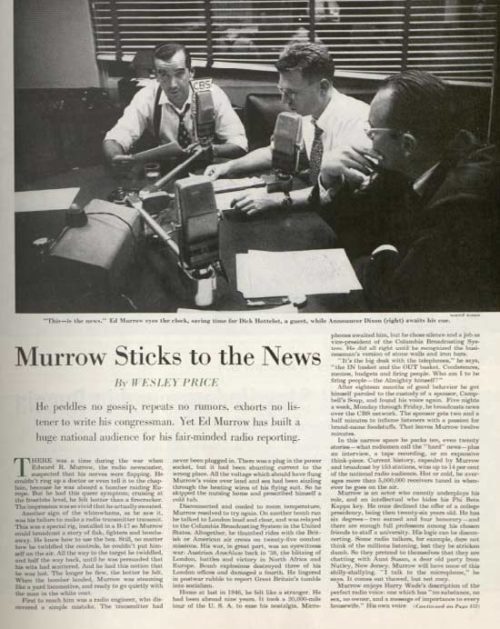Journalists vs. Tyrants: Murrow Crushes McCarthy
Today is the anniversary of one of the greatest journalistic takedowns ever recorded.
At the start of 1954, Senator Joseph McCarthy was a rising political star. His campaign to root out communists in the federal government had won him an approval rating of 50 percent. He was chairman of the powerful Senate Committee on Government Operations. Government officials feared him, and critics avoided speaking out against him for fear of being labeled a communist.
Yet McCarthy’s fall was even faster than his rise. By the end of 1954, he’d been censured by the Senate and shunned by other senators, the media, and much of the public.
What happened between January and December was that McCarthy lost public support. The American people became disenchanted with his endless inquiries, bullying of witnesses, accusations of treason without evidence, and questioning of the loyalty of anyone who opposed him.
Among the few prominent figures willing to challenge him was the veteran journalist Edward R. Murrow. His weekly news program, See It Now, was the forerunner of programs like 60 Minutes. Murrow relished the opportunity to report on controversial topics, and he despised the hysteria and paranoia that accompanied the hunt for communists.
On March 9, 1954, Murrow devoted an entire program to exposing McCarthy and his methods.
https://youtube.com/watch?v=-YOIueFbG4g
Murrow presented the senator in his own words and exposed McCarthy contradicting himself, boasting of his power, and bullying witnesses in congressional hearings. In concluding, Murrow added his own thoughts:
No one familiar with the history of this country can deny that congressional committees are useful. It is necessary to investigate before legislating, but the line between investigating and persecuting is a very fine one and the junior Senator from Wisconsin has stepped over it repeatedly. His primary achievement has been in confusing the public mind, as between the internal and the external threats of Communism. We must not confuse dissent with disloyalty. … We will not walk in fear, one of another. We will not be driven by fear into an age of unreason.
Murrow’s program is widely credited with “taking down” McCarthy. In fact, the broadcast simply encouraged the growing public distaste for the senator, his message, and his manner. The show prompted thousands of letters, phone calls, and telegrams to the CBS studios. For every message criticizing Murrow, there were 15 messages approving of the program.
Its reception encouraged President Eisenhower to take action against McCarthy. The president had long been disgusted with the senator but refused to criticize him publicly. In private, though, he told aides, “I just will not — I refuse — to get into the gutter with that guy.”
Now he saw the public starting to turn against McCarthy. He ordered the release of a report showing how lawyers on McCarthy’s committee had blackened the U.S. Army’s reputation to obtain favors. In public hearings, the Army’s attorney presented evidence of McCarthy’s distortions and personal vendettas. His culminating question to McCarthy, “Have you left no sense of decency?” resonated with the American public.
With the hearings concluded, the Senate voted to censure the senator.
It was not the contents of the See It Now broadcast that made the greatest impact, but the character of the reporter. Had it been presented by any other journalist, the broadcast might have been dismissed as a partisan attack. But Edward Murrow had a reputation for integrity.
Murrow Sticks to the News, from the December 10, 1949, issue of the Post, reflects some of the awe with which journalists regarded Murrow. It was written when Murrow was working in radio and still remembered for his courageous reporting under fire during the London Blitz. Americans admired his just-the-facts, no-hype style of reporting and his careful separation of opinion from facts.
The article reminds us that the ultimate argument against McCarthy wasn’t Murrow’s facts, but his character.

Featured image: Photo by Martin Harris for “Murrow Sticks to the News” from the December 10, 1949, issue of the Post.